What is NDIR?
NDIR stands for 'Non Dispersive InfraRed' and it is s gas concentration measurement method that uses the unique absorption wavelength range of each gas.
For example, CO2 absorbs infrared wavelength region of 4.26 µm.
Since amount of infrared which passes through the atmosphere depends on concentration of CO2 gas contained therein, it is possible to quantify the concentration of CO2 gas by using this phenomenon.
There are many ways to measure gas concentrations but most of them involve chemical changes and changes in the sensor itself, which also affect a target gas being measured.
Compared to those, NDIR method enables a gas concentration measurement without affecting the target gas.

Types and difference of infrared sources (difference between LED and incandescent bulb)
One of the important factors for measuring gas concentration using the NDIR method is selection of an infrared source.
The most important property of an infrared source for NDIR sensors is higher infrared output.
Incandescent lamps with tungsten filament are used for many NDIR CO2 sensors because enough infrared output can be obtained by that type of lamps.
Those lamps also have wide wavelength length which covers from the visible light region to the near-infrared and mid-infrared regions.
In particular, relatively large infrared output can be obtained at 3 µm to 5 µm wavelength which is required for CO2 sensors.
Therefore, even when it is used for a dual-wavelength method sensor (a system which uses not only an absorption wavelength but also a reference wavelength), only one incandescent bulb (single infrared source) is required.
On the other hand, LED is another option for an infrared source. LEDs are able to reduce the size and power consumption of whole sensor, but infrared output is rather small and wavelength range is limited.
So two LEDs are required when it is used for dual-wavelength method NDIR sensors.
Since incandescent lamps and LEDs have different features, it is necessary to select an infrared source considering those features.
Advantages of using incandescent bulbs for NDIR sensors
1. Higher output in the mid-infrared wavelength range
Lower conversion efficiency is often considered as a disadvantage of incandescent lamps comparing with LEDs.
However, it is the efficiency of converting electric power into visible light region and the conversion efficiency of incandescent lamps in the infrared region is better than LEDs.
This is why incandescent lamps are used for NDIR gas sensors.
In NDIR gas sensing, the higher output of an infrared source is, the more accurate a gas concentration measurement becomes.
So high-power incandescent lamps in the mid-infrared wavelength region are used for high-precision CO2 sensors.
Our products are widely used for CO2 sensors for plants that require especially high-precision sensing.
2. Wider wavelength range output
One of the features of incandescent lamps is that wavelength range is wide (from near infrared to mid-infrared).
With this feature, it is possible to build a system with a single infrared source even for specifications that usually require multiple infrared sources.
For example, some NDIR-type CO2 sensors detect not only the target gas absorption wavelength but also a reference wavelength that is not affected by other gases in the atmosphere in order to stabilize the measurement accuracy over a long period of time.
Those sensors are called 'dual-wavelength sensor' and it requires two types of detectors.
Incandescent lamps enable its function to work with only a single source and the cost of the entire system can be reduced.
Material analyzers using near-infrared spectroscopy method is another application that requires wide range of infrared wavelength.
In near-infrared spectroscopy method, a measurement target is irradiated with near-infrared ray and it analyzes changes in absorbance to measure components of a target material in non-destructively and non-contactly.
Since more datas are required for more accurate measurements, a certain infrared output over a wide range of near-infrared wavelength is required.
Incandescent lamps are often used as the best infrared source for near infrared spectrometers.
3. Cost
Although LEDs are normally considered cheap, it is said that incandescent lamps have cost advantage in the mid-infrared region infrared source market.
Features of NDIR sensor lamps made by Oshino Lamps
We have many years of experience in incandescent lamp manufacturing for automotive, aviation usage.
We use our unique manufacturing techniques developed in those fields to produce highly accurate small incandescent light bulbs (SML: subminiature lamps).
We can offer a special NDIR sensor lamp for your requirement, which various shapes of filaments and glass sizes manufactured in-house are selectable for.
In addition, we can provide a product which can withstand harsh environments and are price competitive.
Applications of NDIR sensor lamps
CO2 measurement
Automotive exhaust gas measurement
Monitoring of vehicle interior and indoor environment
Gas / fire detection
Alcohol detection
Refrigerant gas and greenhouse gas measurement

Usage examples of NDIR sensor lamps
There are variations in design and structure of NDIR-type gas sensor modules among each sensor manufacturer.
The followings are typical usage examples of structure and parts layout inside gas cells.
1. In case of "tube type" gas cell
"Tube type" gas cell has a simple structure, in which the NDIR lamp and the infrared sensor are opposed and positioned on both sides of the tube.
Infrared rays emitted from the lamp top pass straight through the gas cell and reach the infrared sensor positioned on the other side.
Example of gas cell structure(schematic illustration):
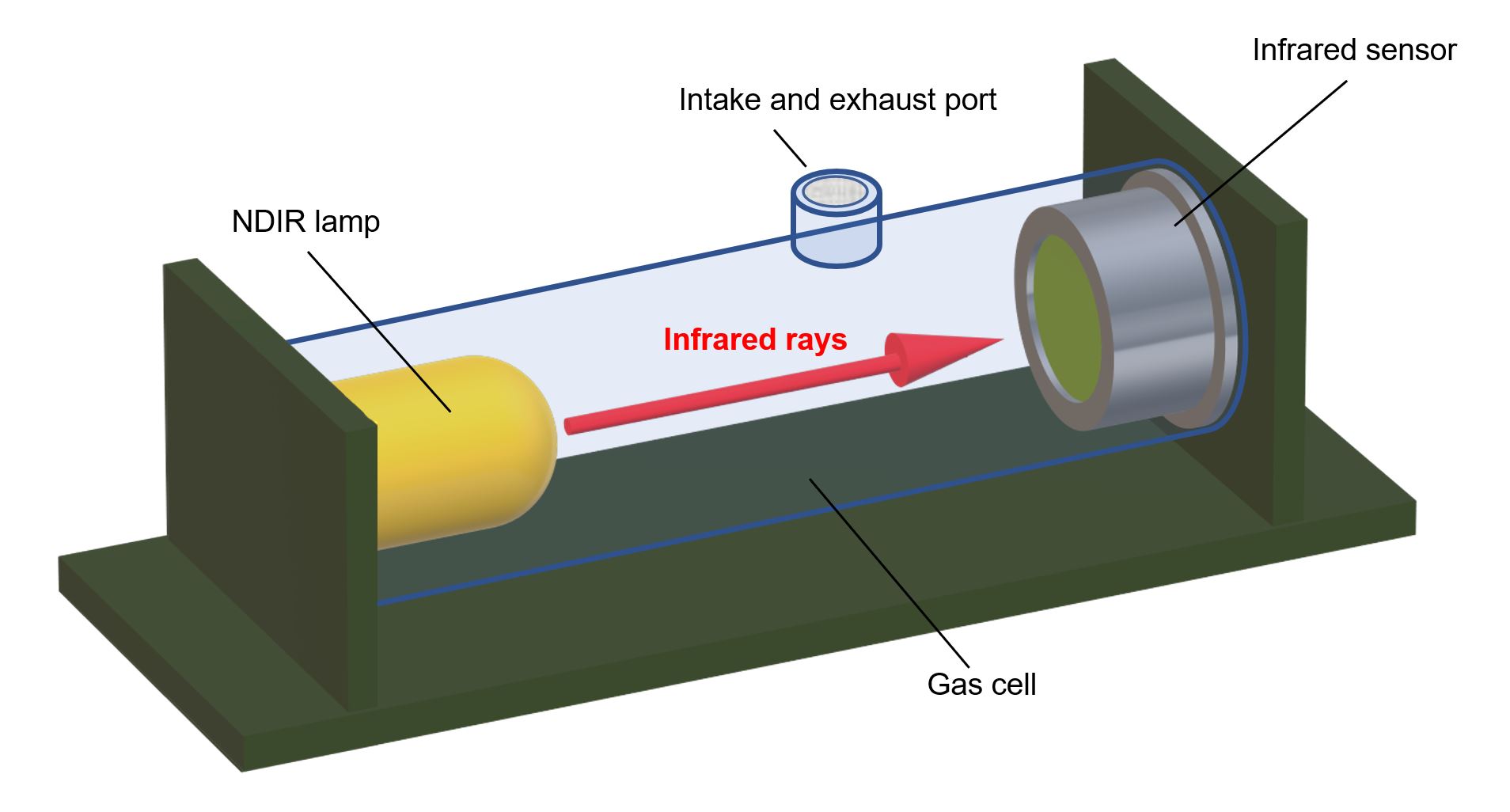
2. In case of "cylinder type" gas cell
In most "cylinder type" gas cells, the NDIR lamp and the infrared sensor are not positioned in a straight line like the "tube type".
Its light path is not linear and a reflecting mirror inside the gas cell is used in many cases.
Infrared rays emitted from the lamp pass through the gas cell by changing its direction with the reflecting mirror, and reach the infrared sensor.
Example of gas cell structure(schematic illustration):
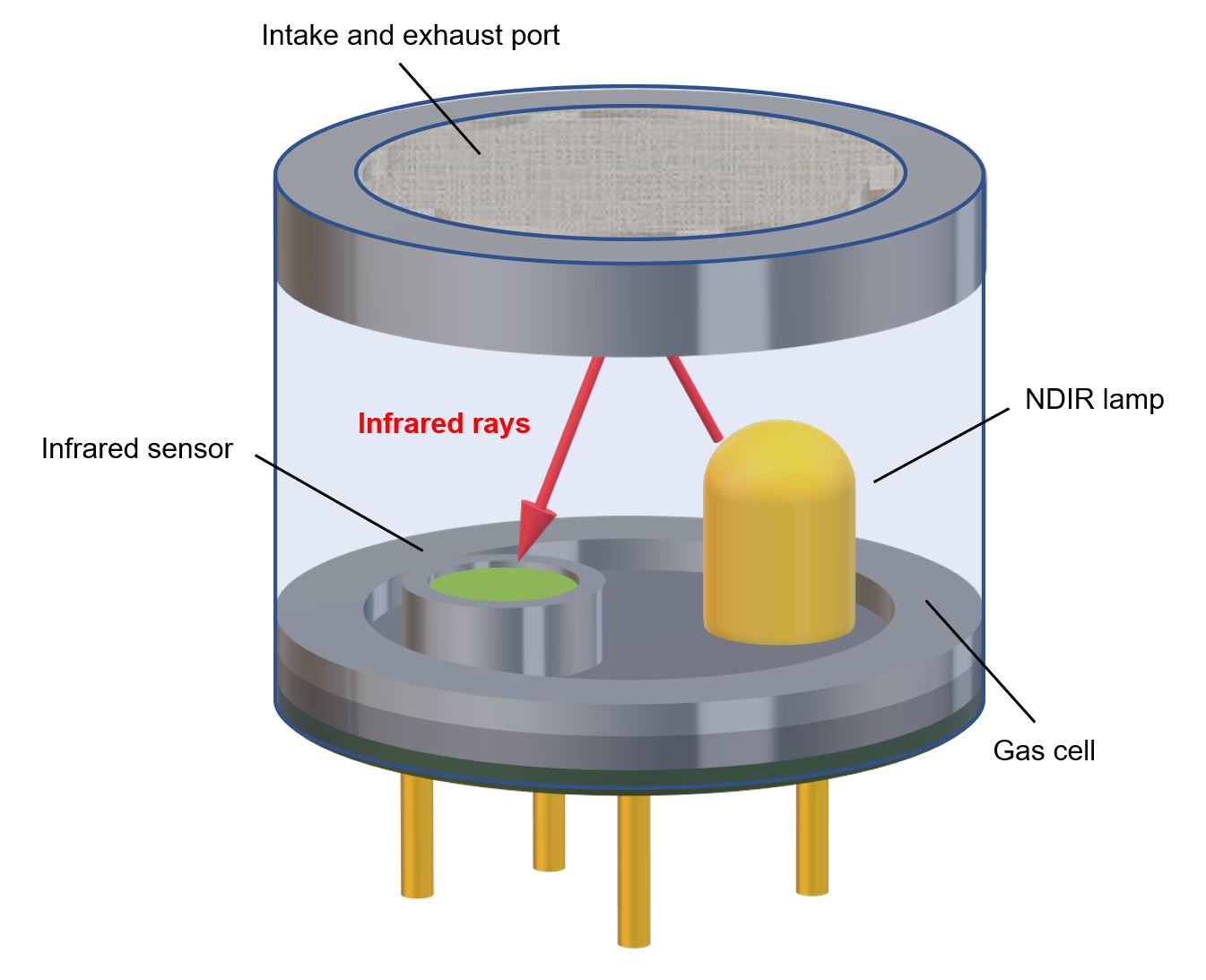
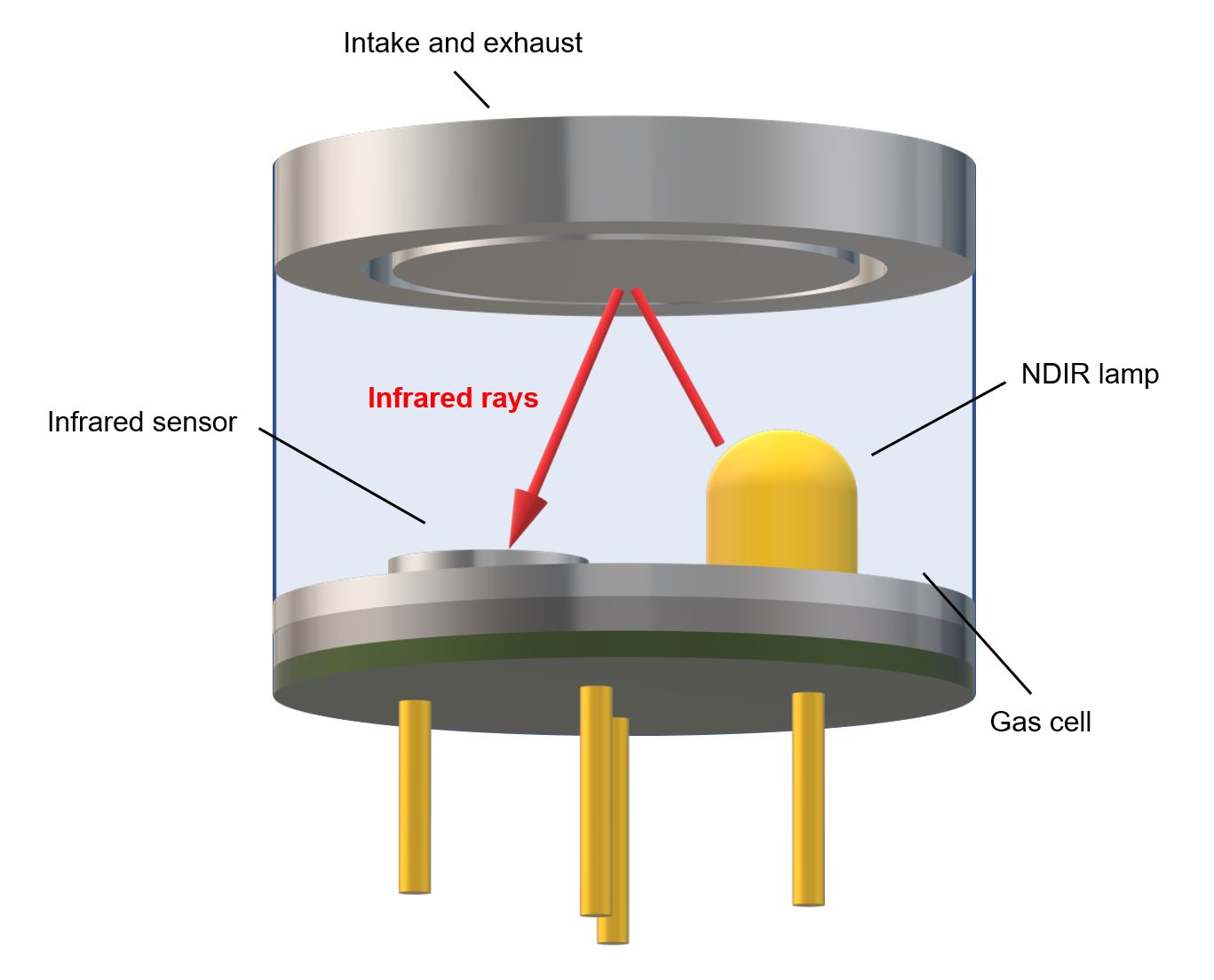
3. In case of "box type" gas cell
In most "box type" gas cells, the NDIR lamp and the infrared sensor are adjacently positioned.
The inner wall of the gas cell functions as a reflecting mirror and the light path is designed to pass inside the gas cell in "U-shape", in many cases.
Infrared rays emitted from the lamp pass through the gas cell by changing its direction with the reflecting mirror, and reach the infrared sensor.
As shown in the image below, infrared rays emitted from the side of a lamp are mainly used instead of using infrared rays from the lamp top.
Example of gas cell structure(schematic illustration):
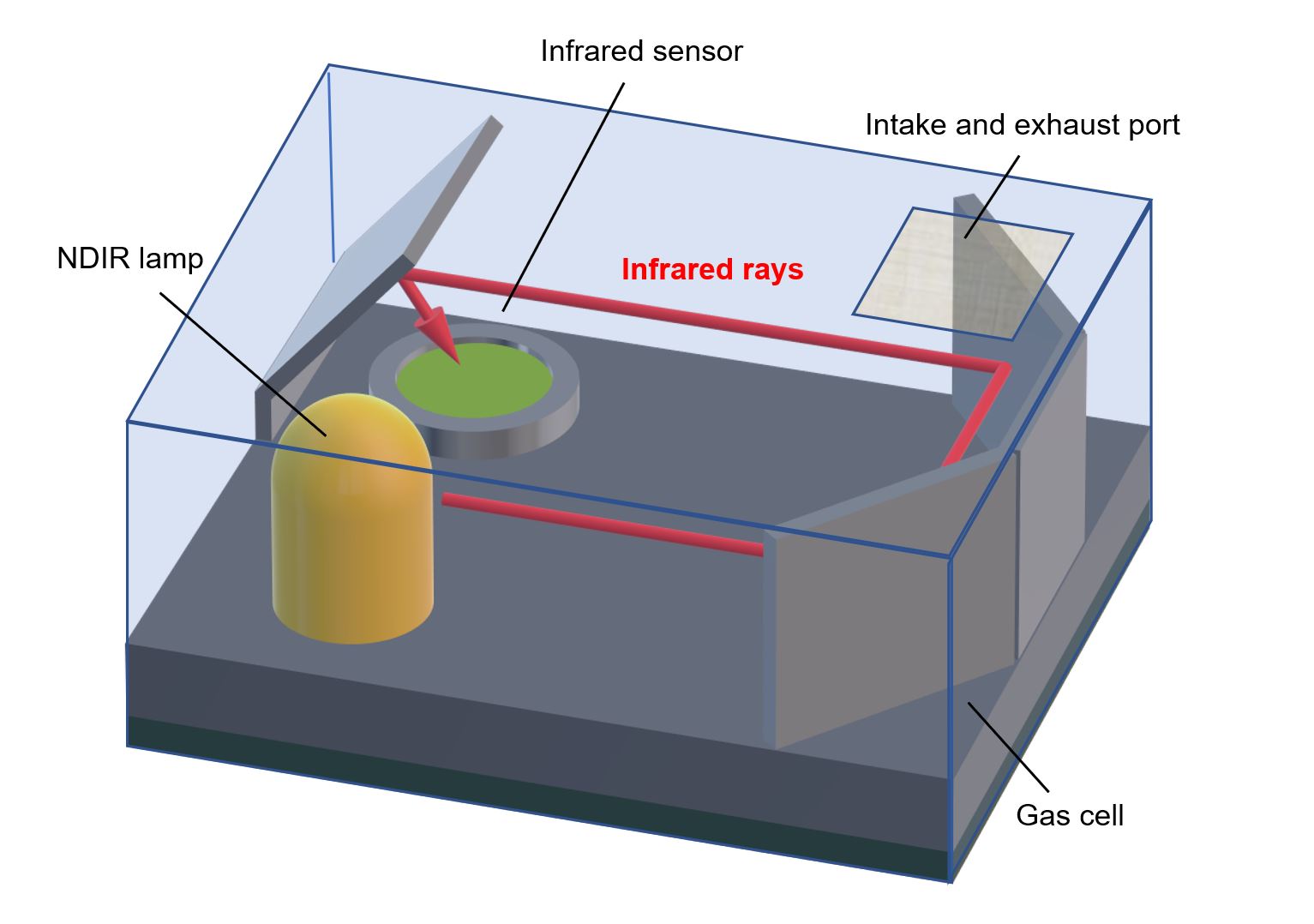






















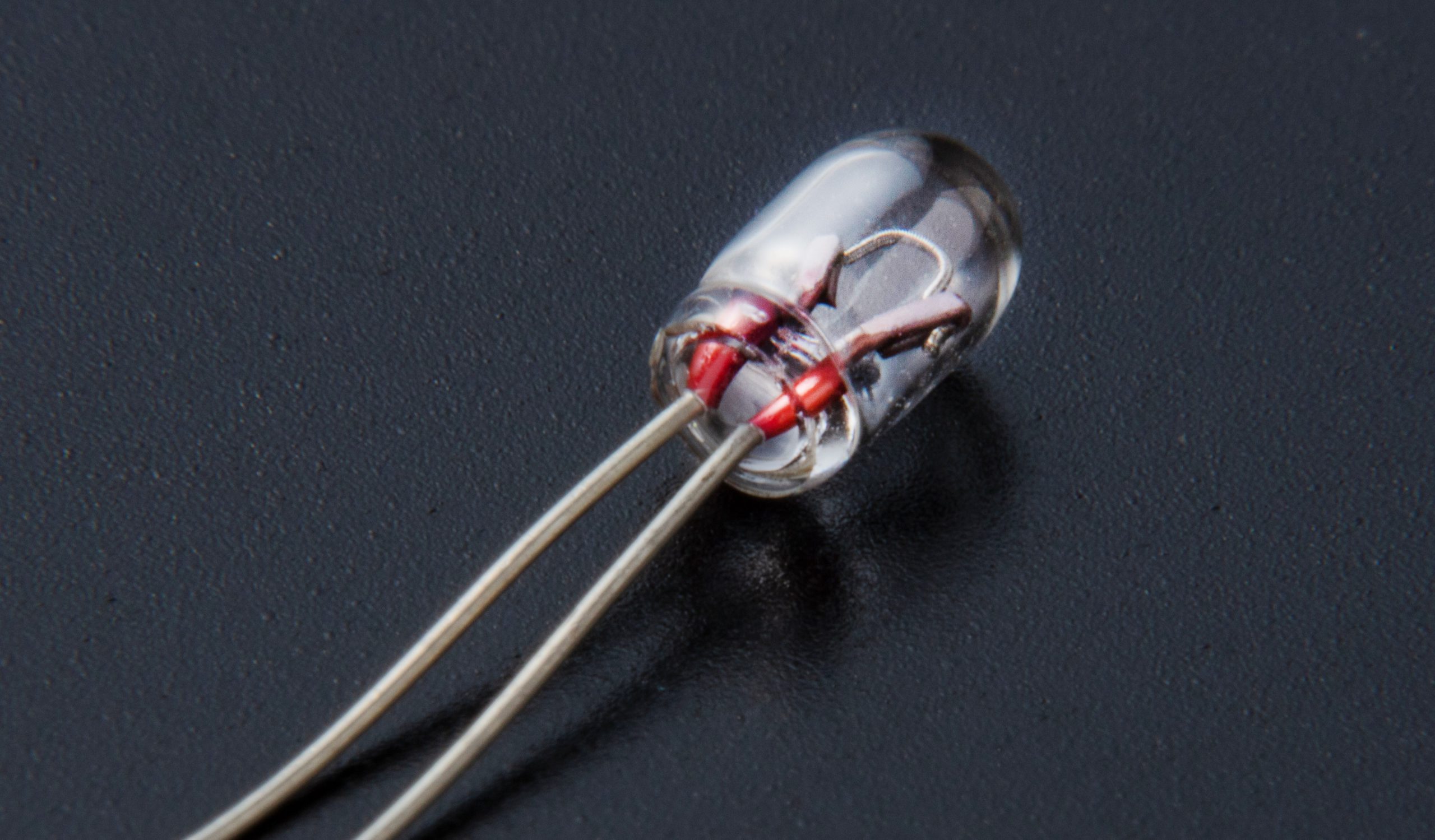




![株式会社押野電気製作所 [本社] 〒140-0011 東京都品川区東大井 5−12−10 大井朝陽ビル4階TEL:03-3471-8548(代)](/wp-content/themes/oshino/images/common/footer-about-en.svg?20211228)
